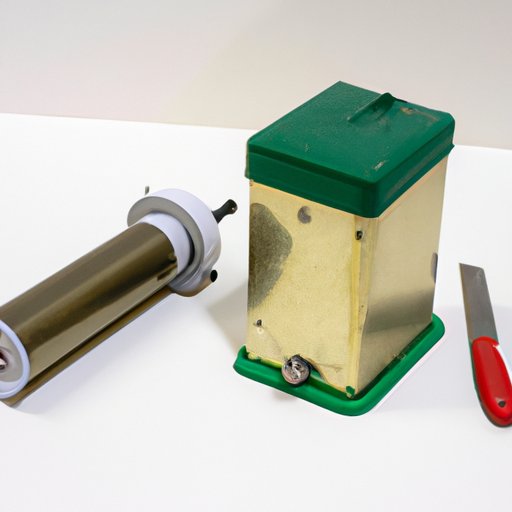
Introduction
Sharpening stones are amongst the most important tools in any toolkit, particularly for those who work with knives or cutting tools regularly. A sharpening stone is simply a piece of abrasive material that can be used to sharpen the edges of knives and other cutting tools. Proper use and maintenance of a sharpening stone are essential for maintaining the sharpness of knives and tools as well as for improving the lifespan of your tools.
Different Kinds of Sharpening Stones
Sharpening stones come in a wide variety of shapes, sizes, and materials. Some are designed specifically for honing knives, while others can be used for sharpening woodworking tools, scissors, and even lawnmower blades. The three most common types of sharpening stones are water stones, oil stones, and diamond stones.
Water stones are the most popular type of sharpening stone, they are easy to use, affordable, and effective. Many professional chefs prefer water stones because they produce a sharper, smoother finish on knife blades than other stone types. As the name suggests, they are used with water as a lubricant, which is what helps to prevent the blade from overheating and prevent steel dust from being inhaled.
Oil stones have long been a favorite of carpenters and other woodworkers. Made from a harder material than water stones, oil stones are better for sharpening harder tools such as chisels and planes. They also require oil as a lubricant to reduce friction and prevent damage to the stone.
Diamond stones are becoming more popular due to their durability. They are made from small diamonds embedded in metal, ceramic, or plastic, and are more expensive than traditional sharpening stones. These sharpeners are great for high volume knife sharpening because they are so durable, so it is important to invest in a good-quality diamond sharpener. And because diamonds are so hard, only water is needed to lubricate the stone.
Preparation Process
Before you start sharpening, you need to prepare your sharpening stone by soaking it in water. Soak your water stone in water for about 10-15 minutes before use. During this time, the stone will absorb water and become more effective at sharpening knives. Avoid soaking an oil stone, these stones require a light coating of oil before sharpening and shouldn’t be soaked in water.
It is essential to choose a work surface to sharpen your tools that does not damage the surface of the sharpening stone. A tabletop or countertop is the ideal surface to use since it provides ample space to work and will not scratch your sharpening stone. However, you can also use a countertop or workbench, make sure to attach a rubber mat so it doesn’t slip when you are sharpening.
Using the Sharpening Stone
Wet the sharpening stone with water before starting to sharpen your tool. Some experts recommend wetting the blade too; this will aid in lubrication, keeping it at a consistent level of sharpness. Next, hold the knife by the handle with the bladed portion of the knife resting against the flat edge of the sharpening stone. Begin sharpening at the base of the blade, using a gentle back-and-forth motion while maintaining a consistent angle. The angle used will vary depending on the type of blade you are sharpening, so it’s best to refer to the instructions that came with your tool. In general, many pocket knives can be sharpened using a 20-22 degree angle while kitchen knives may require a slightly steeper 17-18 degree angle. Always maintain this angle as you sharpen and adjust as needed based on the condition of your blade.
Cleaning the Sharpening Stone
The sharpening stone should be cleaned after every use to maintain effectiveness. First, use a damp cloth to remove any debris or loose steel from the surface of the stone. Then, use mild soap and water to scrub the stone gently and rinse it off. Never use a scouring pad, as this can scratch the surface of the stone. Similarly, avoid using bleach or harsh chemicals to clean your sharpening stone, as this can ruin its abrasive surface.
Troubleshooting Common Problems
Despite best efforts, there are times when sharpening does not produce the desired result. The most common issue is the appearance of coarse grains that make the blade tear rather than cut. This could be because too much pressure was applied and the blade was polished, rather than sharpened. Adjust the sharpening method to be gentler and more consistent, letting your sharpening stone do the work for you. Another common problem is the inability to achieve a sharp edge. This could be due to a worn-out stone, so make sure you replace your sharpening stone when it starts to lose its abrasive surface.
Conclusion
In conclusion, using a sharpening stone is essential if you want to keep your knives and other cutting tools sharp. There are several types of sharpening stones available, so it’s important to find the right one for your needs. When using a sharpening stone, make sure to prepare it properly before use, use the correct technique to sharpen the blades, and clean it after every use. By following these tips, you can ensure that your tools are always sharp and ready to use, which will improve your precision cutting and increase your efficiency.




